==================================================
Hidden rare historical photos

A boxing match on board the USS Oregon in 1897.

Albert Einstein looking fabulous.

Here's his report card!

Samurai taken between 1860 and 1880.

A shell shocked reindeer looks on as World War II planes drop bombs on Russia in 1941

Roy O. and Walt Disney on the day they opened Disney Studios.

Che Guevara.

The Microsoft staff in 1978.

The last known Tasmanian Tiger photographed in 1933. The species is now extinct.

A different angle taken of "Tank Man," the man who stood against
a line of tanks in Tiananmen Square.
He is standing in the street between the tree trunk and the fleeing man.
You can see the tanks approaching from the right.

Winston Churchill out for a swim.

The London sky following a bombing and dogfight between British and German planes in 1940.

Martin Luther King, Jr removes a burned cross from his yard in 1960. The boy is his son.

Google begins.

Nagasaki, 20 minutes after the atomic bombing in 1945.

A Native American overlooking the newly completed transcontinental railroad in 1868.

The Great San Francisco Fire and Earthquake of 1906.

A Japanese plane is shot down during the Battle of Saipan in 1944.

The original Ronald McDonald -- played by Willard Scott!

Hitler in Paris.

Grounded aircraft on September 11, 2001 await orders.

British SAS back from a three month long patrol of North Africa, January 18, 1943.

Disneyland employee cafeteria in 1961.

The first McDonalds.

Fidel Castro lays a wreath at the Lincoln Memorial.


California lumberjacks work on Redwoods.


Archduke Franz Ferdinand with his wife on the day they were assassinated in 1914,
an event that helped spark World War I.

The 1912 World Series.

Bill and Hillary Clinton playing volleyball in 1975.

Elvis in the Army.

The first photo following the discovery of Machu Pichu in 1912.

Child laborers in 1880.

New York's Times Square in 1911.

Construction of Christ the Redeemer in Rio da Janeiro, Brazil.

Steamboats on the Mississippi River in 1907.

Leo Tolstoy tells a story to his grandchildren in 1909.

The Beatles meet Muhammad Ali.

The construction of Disneyland.

Arnold Schwarzenegger on the day he received his American citizenship.

Fourteen year-old Osama bin Laden. He's second from the right.

Construction of the Statue of Liberty in 1884.

Albert Einstein's office, photographed on the day of his death.

Charles Godefroy flies his biplane through the Arc de Triomphe in Paris on August 7th, 1919.

A liberated Jew holds a Nazi at gunpoint.

Construction of the Manhattan Bridge in 1908.

Construction of the Eiffel Tower in 1888.

Construction of the Berlin Wall in 1961.

Titanic leaves port in 1912.

An actual Titanic boarding pass.

This is believed to be the last picture taken of Titanic before her sinking.

Adolf Hitler's pants after the failed assassination attempt at Wolf's Lair in 1944.

The ENIAC, the first computer ever built.

John F. Kennedy has a tea party with his daughter, Caroline.

Brighton Swimming Club in 1863. I'm assuming the top hats are not part of their everyday swimwear.

Ferdinand Porsche (yes, THAT Porsche) showcasing the Volkswagen Beetle to Adolf Hitler in 1935.

The unbroken seal on King Tut's tomb.

The headquarters of Benito Musolini and the Italian Fascist party taken in Rome in 1930.

Apollo 16 astronaut Charles Duke's family photo left behind on the moon in 1972.

The crew of Apollo 1 rehearsing their water landing in 1966.
Sadly, all three astronauts were killed on the launch pad in a fire.

The first Wal-Mart.

Neil Armstrong Buzz Aldrin after walking on the moon's surface.

Mount Rushmore as it appeared in its more natural state.

Stalin goofing around.

Henry Ford (the founder of Ford Motor Co.), Thomas Edison (inventor of the phonograph, motion picture camera and the practical light bulb), Warren G. Harding (29th president of USA) and Harvey Samuel Firestone (founder of Firestone Tire and Rubber Co.) lounging together.

Eleven year-old Adolf Hitler.

A view of Boston in 1860 taken from a hot air balloon.

Pope Pio XII meets with Hitler.

Hitler's bunker.

The cast and creator of Star Trek stand in front of the first Space Shuttle, Enterprise, in 1979.

Bread and soup during the Great Depression.

The only photograph of a living Quagga from 1870. This species is now extinct.

German air raid on Moscow in 1941.

A crash on board an aircraft carrier sometime during World War II.

Dismantling of the Berlin Wall in 1989.

The first photo taken in space from 1946.

An airman being captured by Vietnamese civilians in Truc Bach Lake, Hanoi in 1967
The airman is John McCain.

George S. Patton's dog mourning his lost master on this day of his death.

General Custer and his men during the American Civil War.

Manfred von Richthofen, aka "The Red Baron", petting his dog on an airfield.
| |
|
Change Your Thoughts Patterns For A Healthier You Tomorrow

When we have negative thoughts, we produce toxic responses in our body that make us sick. Make a conscious effort to change your thought patterns today for a healthier you tomorrow.
Seeing past the negative in life is absolutely dire if you are to see everything in life that you need to see. If you choose to focus on the adversity that you are about to face, if you choose to focus on the negative things that people have to say, and the lack of resources you may have to get to where you want to be in life, then you will never hav
e enough focus to get to your dreams.When negative circumstances come your way, make the right choice, and choose to pay no attention to anything but the prize. Seeing the positive in every situation is very helpful in steering one's mind away from the negative circumstances that are sure to alive when one is making great attempts at making his or her life better. Turn a blind eye to the negative influences life will tempt you to dwell on, see past the negative, and give your attention to the dreams you have set for yourself.
10 Diet and Exercise Tips to Living Healthy with Diabetes
Small goals make a big difference
When it comes to type 2 diabetes, you need diet and exercise goals that encourage you to succeed—not ones that set you up to fail, says Ann Goebel-Fabbri, PhD, a psychologist and investigator at the Joslin Diabetes Center, in Boston.
"I think goals have to be small and well spelled out for people. Everyone has the experience of going to a health practitioner and being told something vague: 'You know, you really ought to lose weight.' What does that mean? Goals need to be broken down into small nuts and bolts," she says.
First step: See where you stand now
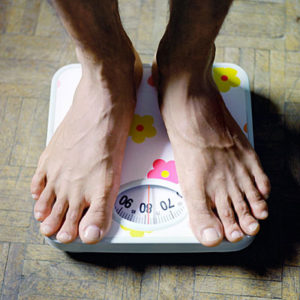
Margaret Savoca, PhD, an assistant professor in the department of nutrition at the University of North Carolina at Greensboro, suggests that you stop and look at your eating and exercise habits, and figure out what will be the easiest changes to make, rather than making huge changes that are tough to sustain.
"Diabetes is a marathon, not a sprint," says Elizabeth Hardy, 47, a Dallas resident who was diagnosed withtype 2 diabetes in 2005. For Hardy it was easiest to make changes in her life one step at a time.
Keep a record of your physical activity
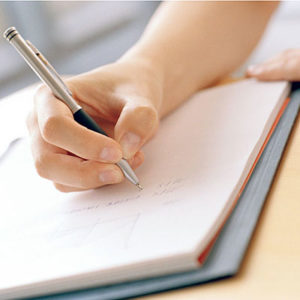
Most people overestimate how much exercise they get. If you write it down, you'll have an honest appraisal of where you're starting.
Bring your own lunch

Avoid eating lunch at restaurants or fast-food joints. Restaurant meals "can go out of control easily," Savoca says. They tend to have large portions, lots of calories, and high amounts of fat. Research has found an association between eating out more and having a higher body weight.
When you make your own lunch, you control the ingredients and your portion sizes. If making your own lunch every day is too much, you might want to try twice a week to start.
Change your daily routine
Instead of stopping for a fat-filled latte on the way to work, have a cup of coffee with low-fat milk and a low-fat granola bar.
Make healthier choices when you go to restaurants
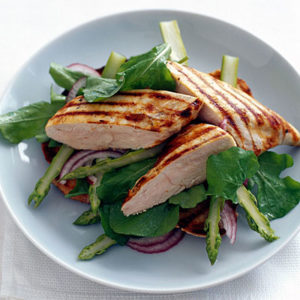
For example, at McDonald's, a diabetes-friendly choice might be a salad with grilled chicken and low-fat dressing. "What's important is for people to be able to problem-solve," Savoca says. "People probably have a lot of the answers; it's just that it takes a little time to come up with them and make them their own."
Use a pedometer
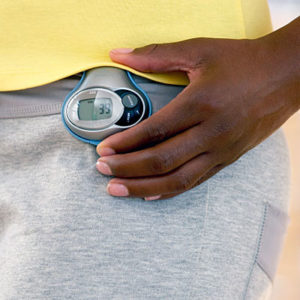
These handy devices—available for less than $20 at sporting goods stores—clip on to your waistband and record the number of steps you take. Use one to estimate how many steps you take on an average day. Then set a goal to slowly increase that number. Maybe you want to take 100 extra steps every day this week, and add another hundred each day next week. Although many experts recommend going 10,000 steps a day for good health, feel free to set goals that work for you, Goebel-Fabbri says.
Keep gum handy

Pop a piece of sugar-free gum (but not too many pieces—some sugar-free gums contain sweeteners that can upset your stomach at high doses). Gum may "fix" your need for a snack and leave you with a fresh, minty taste that you won't want to ruin with a bag of sour-cream-and-onion potato chips.
Try one new fruit or vegetable each week

With the variety available at a typical supermarket, this strategy could introduce you to new favorites for months.
However, test your blood sugar after trying a new item—especially fruit. Some may have a more dramatic effect on blood sugar than others, and if they do, you may have to limit portion sizes accordingly.
Take home menus from your favorite restaurants
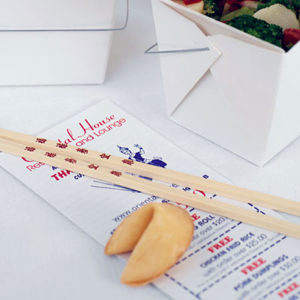
You can research the healthiest options on the menu when you're not rushed to make a decision. Decide what you want before you go into the restaurant and order ahead of your dining companions so you won't be tempted by their choices.
Serve home-cooked meals on smaller plates
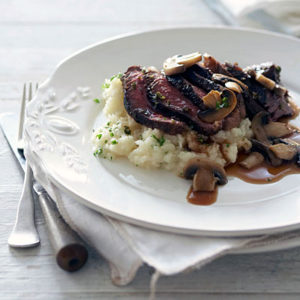
Portions matter. If you serve yourself less food, you tend to eat less than if you have a large plate with a large meal.
Test your blood sugar two to three hours after meals
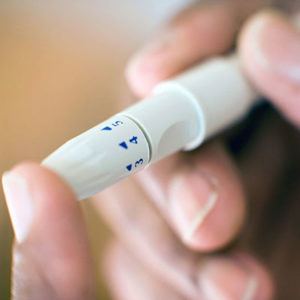
Hardy frequently tests her blood sugar with a glucose monitor. With time she slowly figured out which foods made her blood sugar jump up too quickly. Sometimes her blood sugar gets too high, but she doesn't get down about it; she just aims to do better. "Know that you're going to make mistakes and know that's OK," she says
Source:health.com
11 Things That You Didn't Know Were Invented By Indians
Sugar has been produced in the Indian subcontinent since ancient times. Indian discovered method of turning sugarcane juice into granulated crystals that were easier to store and to transport. India has always been a land of ingenuity but you might not be aware with everything that our beloved country has contributed to the world, have a look at our list and be prepared to be amazed.
1. E-mail
In 1979, as a high school student Shiva Ayyadurai developed a computer program for inter-office mail system. He named his program E-MAIL and copyrighted in 1982. And in the present time, no need to describe the use of e-mail.
2. Intel Pentium Chip and USB
Its looks like that we can't survive without computers and everyone known the contribution of Intel in the IT revolution. Who makes capable Intel to do so, India. Vinod Dham known as the father of the Pentium chip invented the first Intel Pentium chip. Universal Serial Bus (USB) technology also invented by an Indian, Ajay Bhatt.
3. Button
Buttons made from seashell were used in the Indus Valley Civilization for ornamental purpose by 2000 BCE. Some buttons were carved into geometric shapes and had holes pierced into them so that they could be attached to clothes with thread.
4. Wireless communications/Radio
Sir Jagdish Chandra bose was the inventor of the first radio waves for wireless communication in 1895.
5. Sugar
6. Cataract Surgery
The earlier form of Cataract Surgery, now known as 'couching', was first found in ancient India and then introduced to other countries by Indian physician Sushruta.
7. Water on the Moon
One of Independent India's most notable contributions to modern space exploration occurred between 2008 and 2009, with Chandrayaan-1, the Indian Space Research Organisation's (ISRO) first dedicated lunar mission. The Indian 'Moon Impact Probe' first detected the presence of lunar water.
8. Ruler
Rulers made of Ivory were first use by the Indus Valley Civilization period prior to 1500 BC.
9. Ink
The India ink used in ancient India since at least the 4th century BC was called 'Masi'. The Practice of writing with ink and a sharp pointed needle was common in early South India.
10. Slide share
The world's largest slide-sharing website is the brainchild of Rashmi Sinha and her husband Jonathan Boutelle. The website was sold off to LinkedIn for a whopping 640 Crores.
11. Chess

__._,_.___











No comments:
Post a Comment